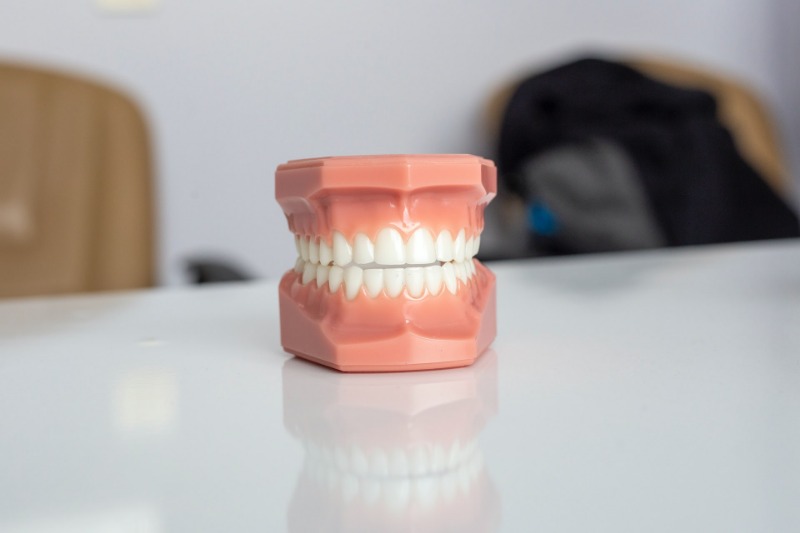Affordable Dentures Glendale
Looking for affordable dentures in Glendale? At Smile Makeover of LA, we create custom, natural-looking dentures. Our dentures restore your ability to eat, speak, and smile confidently. We offer comfortable, durable solutions tailored to your needs. Schedule a consultation today to explore the right denture options for you.
What are Dentures?
Dentures combine functionality and convenience. The patient is made comfortable with dental structures, which are very soon perceived as their own teeth. Dentures do not deliver any discomfort and visually do not differ from real teeth. Dentures completely restore the anatomy and physiology of the dental system.
Thanks to dentures, you can have an attractive smile. Sometimes the result is even better than it was with your own teeth. Thanks to new technologies, dentures are created and can be used in a short time. Even a detachable design with proper installation and surgery can be impossible to differ from and not possible to feel by the dentures owner.
Missing teeth can be replaced by a type of dentures that are prosthetic devices which it can be removed from the mouth. A few missing teeth are replaced with partial dentures. However, full dentures replace a complete set of teeth that are missing. We highly recommend scheduling a free consultation with us to suggest affordable dentures and discuss the best option for you.
The Process of Prosthetics
Dentures are placed with the full or partial absence of teeth. The process of prosthetics takes place in several stages. First, the oral cavity is prepared for prosthetics, if necessary. If there is a need the dentist treats and fills teeth, and removes plaque. Then they make an impression of the teeth for the dentures. When the dentures are ready, it is “tried on” because they should sit perfectly, not distort the bite, and be as comfortable as possible. Only after that, dentures can be fixed.
What Are the Different Types of Dentures?
With all of the variety of types of dentures, they are divided into two large groups:
- Partial dentures (manufactured in the absence of 1 or more teeth);
- Full dentures (with a complete absence of teeth on the jaw).
The Glendale dentist, based on the clinical situation, chooses the design of the dentures, which is selected for the individual features of the dentures bed. If you need to know more about dentures, please call 1-818-578-2324 for a consultation.
Types of Dentures
Dentures can be:
- Removable dentures
- Non-removable dentures
Removable Denture
Removable dentures (also known as flexible dentures) are the ones that a patient can extract from the mouth independently and reinstall them.
To this day, removable structures remain the choice of anyone who wants to restore missing teeth without spending a lot of money. Modern dentures are made of the newest polymers – soft, hypoallergenic and strong material.
There are modern convenient removable dentures, which are fixed directly on the gums and are retained on them due to their shape, without requiring any additional materials – such as gels or glue. Such designs do not interfere with a full life, do not stimulate a vomiting reflex and do not distort the taste of food. Therefore, their wearing is recommended for those who care about preserving the quality of life.
Removable dentures require special hygienic treatment, which, does not require much effort. To ensure that the removable dentures do not fail at the most inappropriate moment, a special fixing cream is used.
Modern orthodontology offers universal dentures – both removable and non-removable, which differ in convenience, ease, strength, aesthetic qualities. Their cost and longevity depend on the selected material.
There are dentures that can be removed completely and partially.
Complete Dentures

If both jaws, the lower or upper sets of teeth are missing they are replaced with full dentures. They are removable sets of teeth made of acrylic. The outside and inside of the teeth are to be cleaned two or three times each day. Very few people are allergic to the material used in the manufacture of dentures. The laboratory technicians and dentist follow a four to five-step process to fabricate the dentures. In order to fit properly, some adjustments will be necessary.
The removable denture is aimed at those patients who completely lost their teeth. It consists of the base part, on which the teeth are made. Removable denture is made of the same materials as partially removable dentures. The removable dentures are fixed in the following ways. The dentures on the suckers are an elastic structure that repeats the gingival relief and actually sucks into it. You can fix the dentures with a cream. The cream is applied to the surface of the dentures before putting on the gums. As we have seen, modern orthopedics offers a wide range of prosthetic dentistry options. With the full or partial loss of teeth, you can always find the optimal solution. The main thing is to choose a reliable dental office and a professional Glendale dentist.
Partial Dentures

A removable dentures can be used to replace one or two missing teeth also. The procedure for making partial dentures is sometimes less involved due to other teeth being present. However, that is not always true. Partially removable dentures are attached to the gums and to the remaining teeth. They are made of different materials. The skeleton of partial dentures is made up of a metal alloy of chrome and cobalt. An acrylic base, containing the teeth, covers the metal.
Immediate Dentures
If an extraction is necessary because teeth cannot be restored, a prefabricated denture is immediately put into place. It acts as a bandage and aids in the process of healing. Often, no stitches are necessary. The denture holds everything in the correct position. Healing is controlled. As the mouth heals, the gums shrink, and dentures feel loose. The lower set is more prone to slippage because there is less bone support present than for the upper set. After four to six months, the dentures can be relined for a better fit. The dentures and gums should be adhesive free for the reline appointment.
Non-removable dentures
Non-removable dentures are cleaned like all other natural teeth. These Glendale dentures are most optimal, especially in the absence of only one or two teeth. They can be represented by single crowns and bridges. The dentures that are able to maximize the restoration of the functions and aesthetics of the teeth are the best.
Are There Alternatives to Dentures?
There are two other ways missing teeth can be replaced:
Bridging Non-Removable Dentures
In the absence of either one or several teeth, it is possible to install a bridge – a tooth or a number of soldered teeth, which are attached in different ways.
With the support of your own teeth. In this case, the bridge is placed on its own preserved teeth. They grind them under the crown and a bridge is fastened to them.
With the support of implants. The bridge is installed on screwed and already implanted implants. Two implants of several connected crowns are fastened the same way as in the case of attaching to natural teeth.
Adhesive bridge structure. Such denture is a one tooth restoration by fixing the dentures to adjacent teeth. At the same time, glass-fiber and composite materials and a strong frame are used. Neighboring teeth are not ground to the root, only small ledges are attached to them, to which the structure is attached. This method is optimal for dentures of teeth, which are not subjected to a large load (front, side). The procedure is performed in one step, at a cost that is much cheaper than implantation.
Denture Implants Cost
There are several stages during a dental implant procedure. Implants are allowed to set and heal after being inserted. When proper settling is determined, the artificial teeth are placed on the implants. Depending on the scope of the implant change, the cost of implants runs between $1700 to $3000.
Dental Implants
Teeth that are comfortable and attractive are paramount to many individuals in their professional and personal lives. Damaged teeth can cause discomfort that drastically impacts one’s ability to manage his or her half of family, co-worker or customer relationships. People are looking for durable, natural feeling teeth replacements. Denture implants may be the answer.
The original roots of the teeth are replaced with dental implants and anchored to the jawbone. The implants serve as a foundation for permanent or removable teeth placement. The teeth feel and look identical to the original teeth. They can be replaced if the need arises.
Dental Crowns
The dental crown reproduces the anatomical shape of the tooth and allows its chewing function to be restored. The crown is attached to the damaged tooth and does not allow it to collapse further. Crowns can be single, and can be welded to each other with artificial teeth – this design is called a bridge denture.
What Dentures to Choose?
Removable dentures are relatively cheap and easy to care for, but non-removable dentures are safer, last longer and allow you to maintain a full-fledged chewing functionality of the mouth. Dr. Sahakyan will help you choose affordable dentures. Tell the Glendale dentist about your priorities, and he will offer a choice of several options. Call 1-818-578-2324 or contact us for a consultation today.

